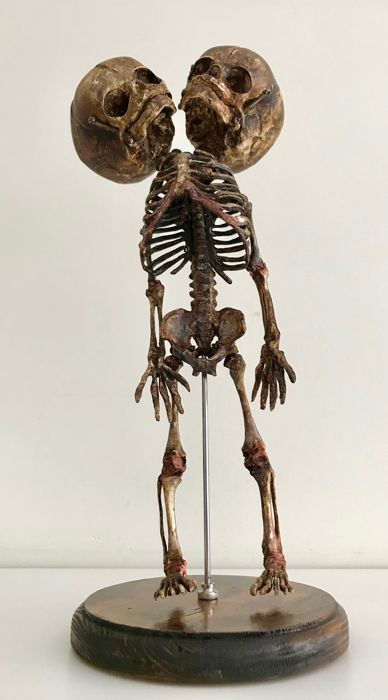No products in the basket.
Genres of Art
A Short History of Curio Art and Curio Objects
People are drawn to the unusual and curious; since the Neolithic era, people of all cultures have collected objects of interest. In the 1500s, notable collections of art and natural objects became known as Kunstkammer in German but the first known use of the word ‘curio’ was in 1849, when the practice of owning a ‘cabinet of curiosities’ was popularised by the Victorians, who used the word ‘cabinet’ to mean a room, rather than a piece of furniture.
The best of these curio cabinets often formed miniature museums in their own right; attractions people would travel to visit. Common themes were natural history, religious or historical objects and unusual art. A well stocked curiosity collection was a sign of status: high society sought to impress with an especially exotic and aesthetically pleasing curio cabinet while academics exhibited their depth of knowledge and expertise on a particular subject. For example, the collection of Thomas Dent Mutter (1811–1859), the American pioneer of reconstructive plastic surgery, was used to teach physicians.
While there was no official rule prescribing the contents of a curio art collection, the generally accepted guideline for Kunstkammer included three categories: sculptures and paintings, curious items from home or abroad and objects belonging in the natural world- for example, antlers, feathers, eggs and other more unusual finds.
Over time, collections often narrowed in focus until their specificity became a point of interest and many collections of curio art and objects formed the basis for museums still operating today. The Mutter museum in Philadelphia opened in 1863 featuring Thomas Dent Mutter’s collection and now holds an impressive range of medical curiosities. Oxford’s Ashmolean Museum was founded with English academic Elias Ashmole’s collection and library.
It is a growing trend to have a collection of curio art and objects in your own home. These are a very personal and interesting focal point for any room and while the original guidelines may be more relaxed, they are a good inspirational starting point. Whether you are interested in curio art, objects, natural history or other themes, good questions to ask are: “What inspires you? What will fascinate?” Keeping these questions in mind will help you begin to build your own curio collection.
Natural history has formed the basis for many collections: if you have an interest in nature and taxidermy, the Cave Nectar Bat skeleton under glass is a classic and timeless beginning or addition. A Vampire Hunting box comprised of many features is an intricate and exciting tribute to the Victorians who popularised the cabinet of curiosities. Collectors of erotica can find art and objects in very different styles- for example; the Illuminated Peep Show sign originally displayed in Soho- a genuine piece of London history, and the Phallus from the Nguadi- a fertility symbol carved in wood. A lithograph which embodies the spirit of the curious is “Capers”, by Hans Canters. No matter your theme, with so many elements, its very strangeness may just fit right in!

